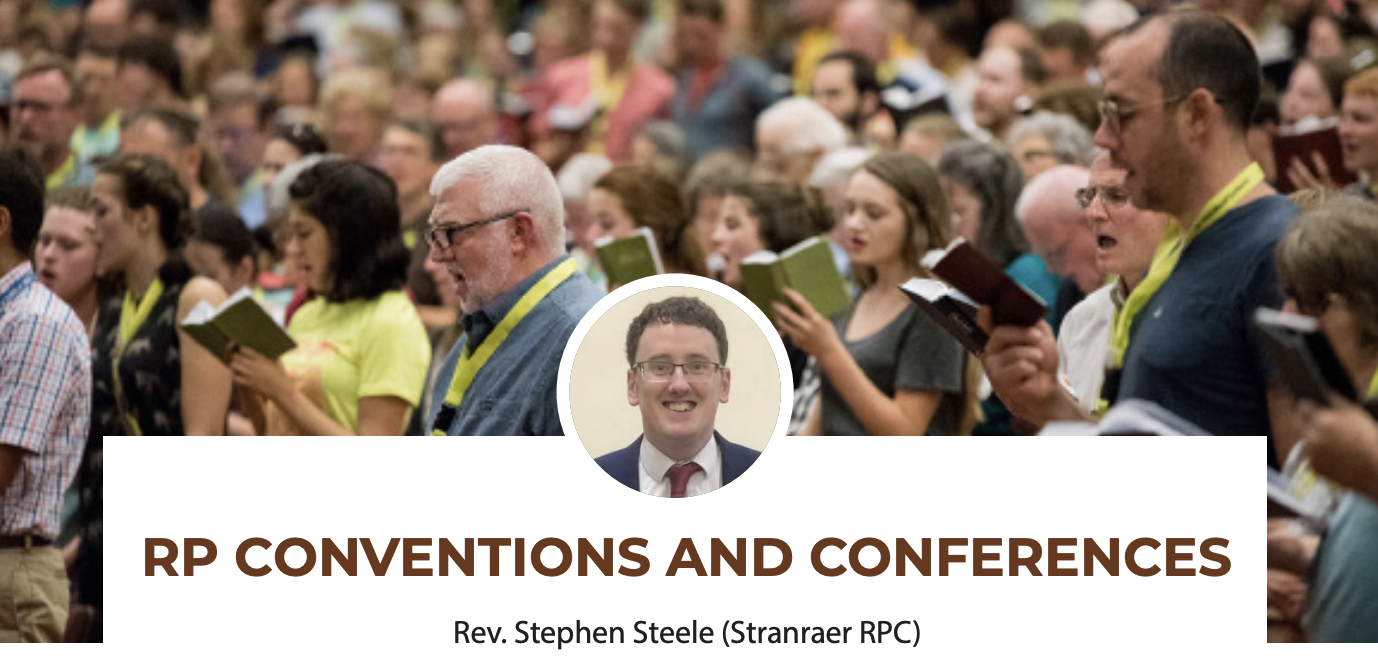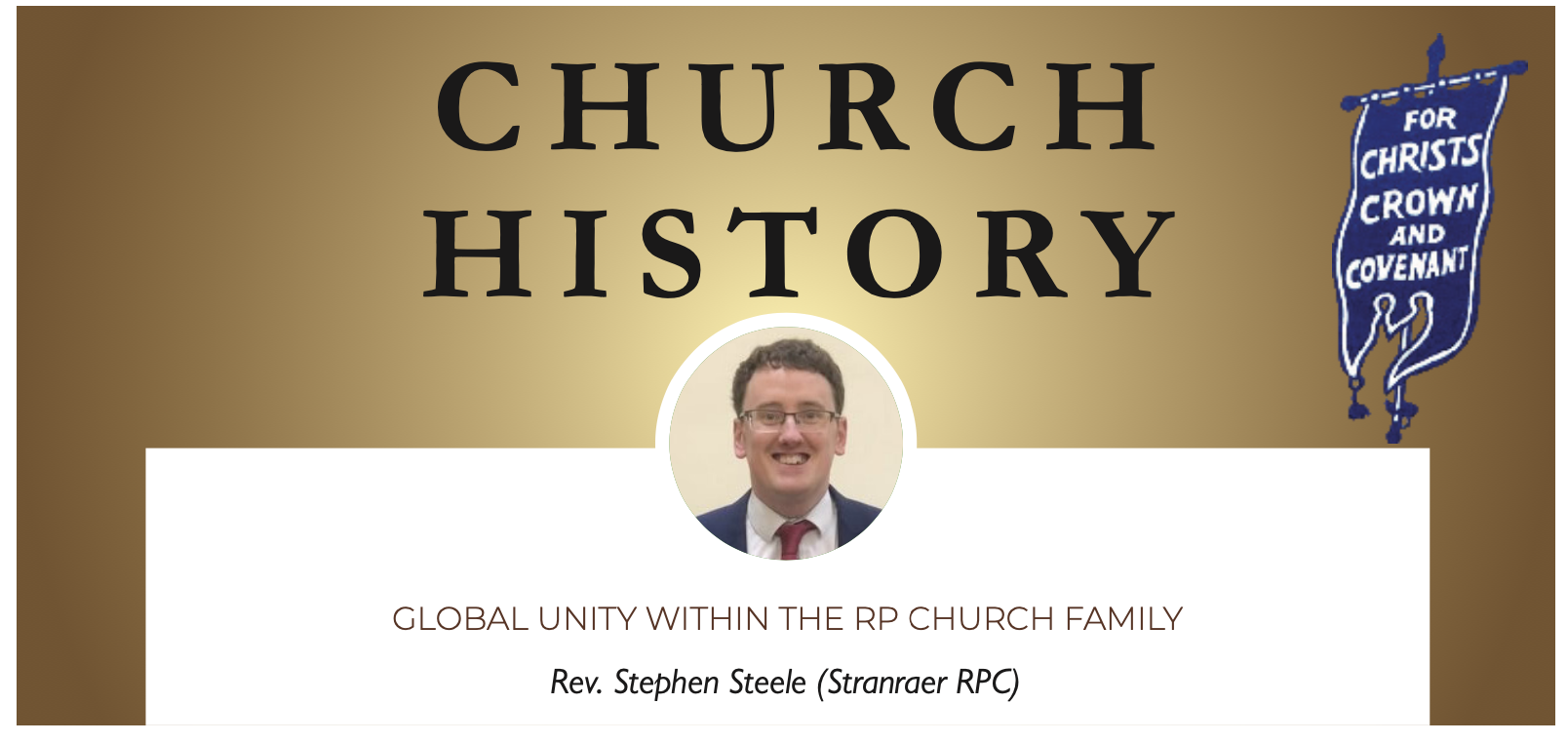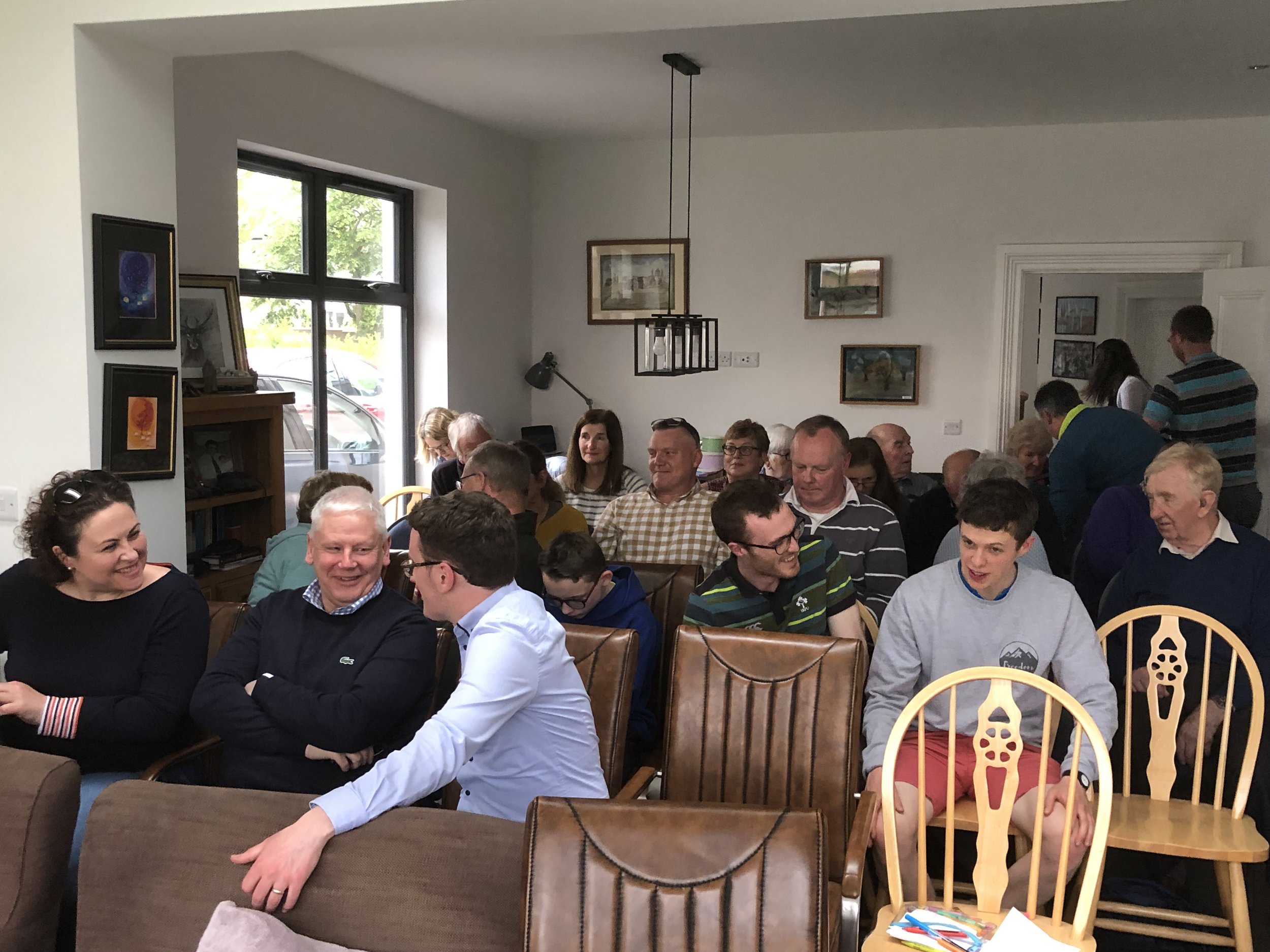Over the past year or so, the RP Global Alliance have contributed a series on Global Unity to the various RP Church magazines around the world - the Covenanter Witness, RP Witness and Good News. Stephen was asked to contribute two articles from a historical perspective. You can read the second one below:
Having considered in the previous article how Reformed Presbyterians have sought to express unity with believers outside the RP church family, we are now going to consider how a sense of unity has been fostered between the various denominations which make up the global RP Church.
International Support and Encouragement between Covenanters
There were, of course, personal links between Covenanters in Scotland, Ireland and North America even before the formation of the various Reformed Presbyterian denominations. Congregations in what are now the United States and Canada were formed as Covenanters emigrated from the Old World to the New, with pastors sent from Scotland and Ireland to minister to them. The first American RP Presbytery was formed in 1774 by four immigrant Irish and Scottish RP ministers. In 1858, the first RP congregation in Australia was started after an Irish RP licentiate was sent as a Colonial Missionary.
While the majority of Covenanter ministers who crossed the Atlantic in the eighteenth century did so permanently, there were also who visited for the sake of mutual encouragement, before returning home. In 1789 Rev. James Reid was given leave from his duties in South West Scotland to visit America, returning the following year with a call from South Carolina, either to himself or to any other member of the Presbytery – which they all declined. This practice of ‘mutual eligibility’ – a minister in one RP denomination being free to receive a call from a congregation in another RP denomination – has continued without controversy to the present day.
As time went on, traversing the Atlantic became less of an ordeal. In fact, in 1844, Rev. John Sprott (a Scottish RP licentiate who had become a Seceder minister in Nova Scotia), commented that ‘crossing the Atlantic is now an easy matter’ as it only took ten days. In 1860 RPCS minister John Graham, having recently become minister in Liverpool, went to America and came back with $3000 which enabled his new congregation to finish their church building. Irish RP minister Thomas Houston spent four months in the States in 1856, and an American obituary stated ‘his friends and admirers on this side of the Atlantic were as numerous as those in the country of his birth’. William Milroy was the first RPCS minister to train for the ministry in North America, studying at the university of Toronto, before being licensed by the RP Presbytery of Pittsburgh in 1861 and immediately returning home to accept a call in Scotland.
International Conferences
Opportunities for unity between the various RP denominations, particularly in the form of conferences, began in 1896, and really took off in the second half of the twentieth century. Obvious reasons for this were the rise of air travel – journeys which had once been measured in weeks and then days, now only took hours – as well as better economic conditions in the English-speaking world.
Another reason is that by the time of the first international conference in 1896, it was clear that institutional unity with other denominations would be impossible for RPs unless they gave up their distinctive principles. The second half of the 1800s was a time when there was a great push for the different denominations to unite with each other. As we saw last time, these efforts at visible unity were something that Reformed Presbyterians had a great deal of sympathy for, and some of the leading RPs of the 19th century were noted for their catholicity and warm personal friendships with those in other denominations. However, they were not in favour of unity at any cost.
In Scotland, the majority of the denomination, which had split off in 1863, united with the Free Church in 1876, which in turn merged with the United Presbyterian Church in 1900 and then the Church of Scotland in 1929. In 1872, RPCS minister Torrens Boyd, speaking at the Irish RP Synod, had prophetically warned that such unions were like chaining two ships together – when the waves begin to roll ‘they will rasp each other’s sides off, tear open each other’s hearts and go down together’. At the same Synod, the RPCI received a proposal from the mainstream (and still exclusively psalm-singing) Presbyterian Church in Ireland to discuss a potential union. They replied, acknowledging the Christian kindness and love of union in initiating the proposal, declaring their ‘earnest concern and desire to have the divisions of the Church speedily healed, on the grounds of Scriptural truth and duty’, but concluding that given their ministerial and membership vows, any discussions were unlikely to produce the desired union.
Against this background, the ‘First International Convention of Reformed Presbyterian Churches’ was held in Scotland in 1896. The purpose of was ‘to examine the distinctive doctrines that were held by the three Churches and to renew their commitment to these common principles’. The book published to commemorate the conference lauded its success in this regard: ‘The first international Convention in her history has infused new life into the Church, and cheered her ranks’. Another benefit of the conference was that ‘Covenanters from the Old and New Worlds met each other for the first time face to face, and clasped hands warmly together in a friendship which will endure while life lasts’.
One of the resolutions at the conference was to ask the Synods to hold a similar convention in 1899. As it turned out, however, it was almost four decades before a similar conference was held – marking the tercentenary of the signing of the National Covenant of Scotland in 1938. The conference – once again held in Scotland – was organised by Revs A. C. Gregg, W. J. Moffett (RPCS) and Rev. J. Boyd Tweed (an American pastor who had recently been inducted as pastor in the Glasgow RP Church). The number of delegates totalled 630, with more joining them for the various public meetings.
Once again, it was hoped that a series of conferences would follow, but the war and its aftermath delayed plans. International Youth Conventions were held in Scotland in 1962 (with 35 Americans chartering a plane) and Ireland in 1964.
The first all-age International Conference of the modern era was held in 1966 in Carlton College, Michigan. Between 60 and 70 Irish RPs chartered a flight to attend, with a total attendance of 1352. A conference planned for Scotland in 1968 did not take place. Further International Conferences in the US were held in 1966 and 1970, with the planned 1974 conference moved to 1976 due to fuel shortages. Since then, International Conferences have been held in America every four years, with the venue changing to Calvin College, Michigan in 1996 and then Indiana Wesleyan University in 2012. The conference planned for 2020 was initially postponed for a year due to the outbreak of COVID-19, before being cancelled altogether. God willing, we will return to IWU in 2024.
International Conferences organised by the Irish RP Church have been held every four years from 1982, initially at Kerrykeel, then Portrush, Termonfeckin (five times), Gartmore (Scotland – twice) and from 2018 at the Gold Coast in Waterford.
The current arrangement means that an International Conference is held every two years, alternatively in the USA and the UK/Ireland. As the years have gone by, the number of countries represented has increased dramatically given new RP works in Asia and South America.
The RPCS contingent at the last International Conference in Waterford in 2018
Opportunities for Global Service and Ministry
The Geelong Bible Conference is held in Australia every two years and has featured speakers from the RPCNA, RPCI and RPCS, as well as from those outside the global RP church. Due to their relative proximity, the Australian RP Church has taken a particular interest in the Japanese Presbytery, sending and receiving mission teams, as well as sending ministers to teach at Kobe Theological Hall (as other RP denominations have also done).
A ‘Consultative Committee of the Three Covenanting Churches’ met 3 times during the 1966 conference and discussed efforts by the Synods towards drawing the three churches together. They discussed the following issues: Praise (namely the possibility of an international psalter), Christian Education, Magazines, Exchange of Personnel (in the form of pulpit exchanges and stated supplies, as well as Irish RPs teaching and studying at RPTS as well as Belfast), Foreign Mission Work, International Conferences, Pensions, and Reciprocity in Doctrine.
A joint meeting of ministers and elders representing the Churches in Scotland, Ireland and America was due to be held in July 1972 in Portrush but was cancelled due to the outbreak of the ‘The Troubles’ in Northern Ireland. In our own day, the RP Global Alliance seeks to continue these efforts to facilitate cooperation between the various denominations.
Since 1997, congregations in the various RP denominations have benefited from hosting RP Mission Teams, organised by the RPCNA, but with opportunities for others to serve as well. Irish and Scottish young (and older) people have served together on go teams. Young people from the US and elsewhere have had the opportunity to experience the wider RP church through formal initiatives like the Covenanter Summer Institute and Semester in Scotland, as well as through attending church camps in Ireland. Irish young people have taken part in Theological Foundations Backpacking trips in Colorado. Seminary students have taken advantage of the opportunity to do internships in RP congregations on other continents.
Many of us have been personally enriched by these connections, and while we feel the smallness of our own denominations at times, those things we perhaps miss out on are more than compensated for by being part of a global body with an international vision and an abundance of opportunities for service and fellowship together.












